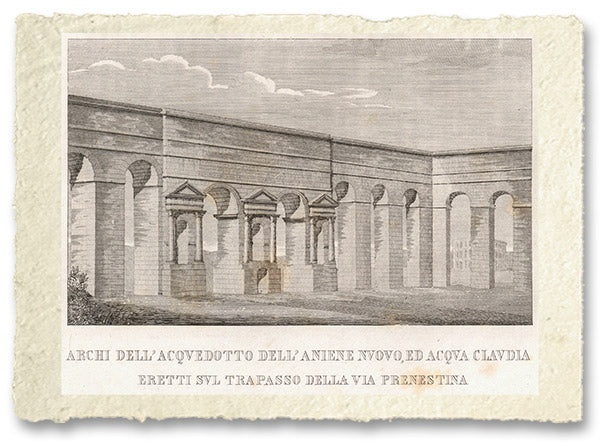Arches of the Aniene Nuovo Aqueduct
Arches of the Aniene Nuovo Aqueduct
Couldn't load pickup availability
SKU:W24HF8AKG93JX
WHY BUY
- Magnificent and real colors
- It makes any room elegant
- Perfect for a prestigious gift
CHARACTERISTICS
Print on handmade paper from Amalfi
Sheet size: 30 x 42 cm
Material: work printed on very fine handmade Amalfi paper with fringed edges
Print on handmade Amalfi paper with frame
Sheet size: 30 x 42 cm
With frame: 32 x 44 cm
Material: work printed on very fine handmade Amalfi paper with fringed edges, handmade beech wood frame
DO YOU WANT INFORMATION ON THE PRODUCT? WHATSAPP CHAT WITH A CONSULTANT
The work
The Aniene Nuovo Aqueduct, also known as Anio Novus, is one of the most impressive aqueducts built in ancient Rome, begun under the emperor Caligula in 38 AD and completed under Claudius in 52 AD. This aqueduct, the highest among those of Rome, extended for approximately 86,876 km, of which approximately 73 km underground and 14 km on the surface.
The Anio Novus took its water from the Aniene river, initially collecting water near Subiaco, where Nero had built three artificial lakes to improve the quality of the water through a natural settling system. Subsequently, Emperor Trajan modified the collection point, moving it further downstream.
The route of the Anio Novus shared several sections with other aqueducts, particularly the Aqua Claudia, and passed through several significant archaeological areas, including the Parco degli Aquedotti in Rome. The surface section was supported by imposing arches, some of which are still visible today.
The water of the Anio Novus was known for its large daily flow rate, the highest of all Roman aqueducts, but it was also prone to becoming muddy during rains, despite the various settling systems used to improve the quality.
These arches not only represent an extraordinary engineering feat, but also constitute a testimony to the sophisticated infrastructure network that guaranteed the city of Rome's water supply, supporting an ever-growing population and its urban development.
How reproductions are made




Scopri i pregiati materiali di Trizio Editore
Carta di Amalfi fatta a mano, cornice in legno di faggio e vetro museale. Guarda i particolari dei prodotti che renderanno la tua casa più elegante e preziosa.



